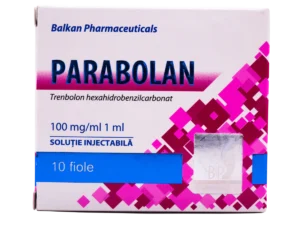Introduction
 Muscle imbalances are a common issue faced by bodybuilders and fitness enthusiasts alike. These imbalances occur when certain muscles become stronger or more developed than their opposing muscle groups. Not only can this lead to aesthetic asymmetry, but it can also increase the risk of injuries and hinder overall performance.
Muscle imbalances are a common issue faced by bodybuilders and fitness enthusiasts alike. These imbalances occur when certain muscles become stronger or more developed than their opposing muscle groups. Not only can this lead to aesthetic asymmetry, but it can also increase the risk of injuries and hinder overall performance.
Addressing and fixing muscle imbalances is crucial for achieving a well-rounded and proportionate physique. In this article, we will explore the causes of muscle imbalances in bodybuilding and provide practical recommendations to help correct them.
One of the primary factors contributing to muscle imbalances is improper training techniques and exercise selection. Many individuals tend to focus on their favorite exercises or muscle groups, neglecting the importance of balanced training. Additionally, poor form and technique during exercises can also lead to muscle imbalances, as certain muscles may become overworked while others are underutilized.
Another common cause of muscle imbalances is muscle tightness and flexibility issues. Tight muscles can inhibit the range of motion and limit the activation of opposing muscle groups. For example, tight hip flexors can lead to weak glutes, resulting in an imbalance between the front and back of the legs.
Furthermore, lifestyle factors such as prolonged sitting or repetitive movements can contribute to muscle imbalances. Sedentary jobs and activities that require repetitive motions can lead to muscular imbalances and postural distortions over time. These imbalances can affect not only the aesthetic appearance but also the overall functionality and performance of the body.
Fortunately, there are effective strategies to fix muscle imbalances and restore balance to the body. By incorporating specific exercises, stretches, and corrective techniques into your training routine, you can target weak muscles, improve flexibility, and promote overall symmetry.
In the following sections of this article, we will delve into the main causes of muscle imbalances in bodybuilding and provide practical recommendations on how to fix them. By following these guidelines, you can enhance your training, reduce the risk of injuries, and achieve a more balanced and harmonious physique.
Now, let’s move on to the main text and conclusion.
Identifying Muscle Imbalances
Understanding the Imbalance
The first step in fixing muscle imbalances is to identify and understand the specific imbalances present in your body. This requires a keen sense of self-awareness and observation. Take note of any noticeable differences in muscle size, strength, or function between opposing muscle groups.
Seek Professional Assessment
For a more accurate assessment, it is recommended to seek the guidance of a qualified fitness professional or physical therapist. They can perform a thorough evaluation of your posture, movement patterns, and muscle activation to pinpoint any imbalances that may be present. This assessment will serve as a valuable foundation for developing an effective corrective strategy.
Corrective Exercises
Target Weak Muscles
To address muscle imbalances, it is crucial to focus on strengthening the weaker muscle groups. This can be achieved through targeted exercises that isolate and engage the specific muscles in question. For example, if you have weak glutes, incorporating exercises like hip thrusts, glute bridges, and lunges can help activate and strengthen these muscles.
Balance Training
In addition to targeting weak muscles, it is important to incorporate balanced training into your routine. This means ensuring that you are training all muscle groups equally, rather than overemphasizing certain areas. Incorporate exercises that engage both the agonist and antagonist muscles to promote overall balance and symmetry.
Progressive Overload
To effectively address muscle imbalances, it is essential to apply the principle of progressive overload. Gradually increase the intensity, volume, or resistance of your exercises over time to continually challenge and stimulate muscle growth. This will help both the weaker and stronger muscles to develop at a similar pace, ultimately reducing imbalances.
Flexibility and Mobility
Stretching Exercises
Muscle tightness and lack of flexibility can contribute to imbalances. Incorporate regular stretching exercises into your routine to improve muscle length and flexibility. Focus on stretching the tight muscles while maintaining proper form and technique. For example, if you have tight hip flexors, incorporate hip flexor stretches to release tension and promote balance.
Myofascial Release
In addition to stretching, consider incorporating myofascial release techniques such as foam rolling or using a massage ball. These techniques target trigger points and knots in the muscles, helping to release tension and improve overall muscle function. Pay particular attention to the tight muscles identified during your assessment.
Posture and Alignment
Ergonomic Adjustments
Evaluate your daily activities and make necessary ergonomic adjustments to improve posture and alignment. Ensure that your workspace, furniture, and equipment support proper body alignment. Avoid prolonged sitting or standing in one position and take regular breaks to stretch and move around.
Postural Strengthening
Incorporate exercises that specifically target postural muscles, such as the core, upper back, and glutes. Strengthening these muscles will help improve posture and maintain proper alignment, reducing the risk of muscle imbalances.
Conclusion
In conclusion, muscle imbalances are a common issue in bodybuilding that can hinder progress and increase the risk of injuries. However, by identifying the imbalances, incorporating targeted exercises, focusing on balanced training, improving flexibility and mobility, and maintaining proper posture and alignment, it is possible to correct and prevent muscle imbalances.
Remember, consistency and patience are key when addressing muscle imbalances. It may take time to see significant changes, but with a dedicated approach, you can achieve a well-balanced and proportionate physique, enhancing both your aesthetic appearance and overall performance in bodybuilding.
Practical Recommendations to Fix Muscle Imbalances
1. Incorporate Specific Exercises
Identify the weaker muscle groups and incorporate exercises that target and strengthen those specific areas. For example, if you have weak hamstrings, include exercises like Romanian deadlifts, hamstring curls, and glute-ham raises in your training routine.
2. Focus on Balanced Training
Ensure that you are training all muscle groups equally to promote overall balance. Avoid overemphasizing certain muscle groups and incorporate exercises that engage both the agonist and antagonist muscles. This will help prevent further imbalances and promote symmetry.
3. Gradually Increase Intensity
Apply the principle of progressive overload by gradually increasing the intensity, volume, or resistance of your exercises. This will stimulate muscle growth in both the weaker and stronger muscles, reducing imbalances over time. However, be mindful of maintaining proper form and technique to avoid injuries.
4. Prioritize Flexibility and Mobility
Incorporate regular stretching exercises to improve muscle length and flexibility. Focus on stretching the tight muscles identified during your assessment. Additionally, consider incorporating myofascial release techniques, such as foam rolling or massage, to release tension and improve muscle function.
5. Maintain Proper Posture and Alignment
Make necessary ergonomic adjustments in your daily activities to improve posture and alignment. This includes ensuring proper workspace setup, using supportive furniture, and taking regular breaks to stretch and move around. Incorporate exercises that target postural muscles to strengthen them and maintain proper alignment.
6. Seek Professional Guidance
If you are unsure about identifying or addressing muscle imbalances, consider seeking the guidance of a qualified fitness professional or physical therapist. They can provide a comprehensive assessment, personalized guidance, and additional techniques to help you fix muscle imbalances effectively.
7. Stay Consistent and Patient
Fixing muscle imbalances takes time and consistency. Stick to your corrective routine and be patient with the progress. Results may not be immediate, but with dedication and perseverance, you can achieve a well-balanced and proportionate physique.
Remember, it is important to listen to your body and make adjustments as needed. If you experience any pain or discomfort during exercises, consult with a healthcare professional to ensure proper form and technique. By implementing these practical recommendations, you can effectively fix muscle imbalances and improve your bodybuilding journey.








